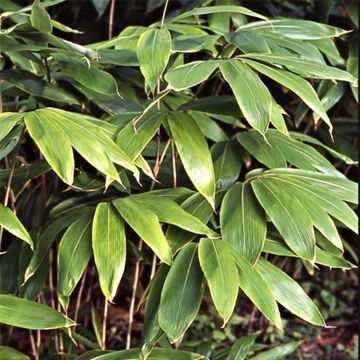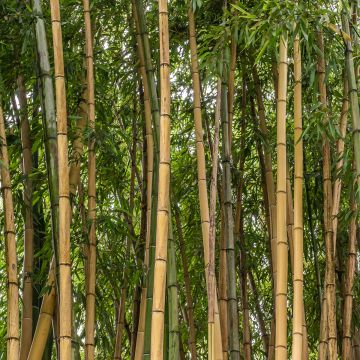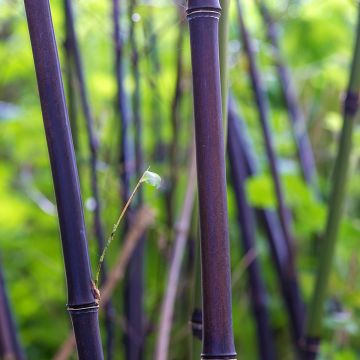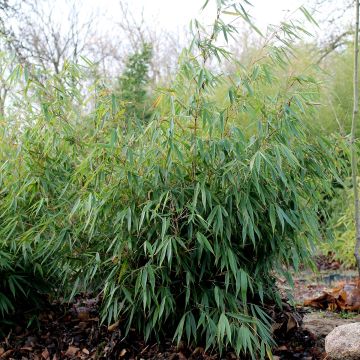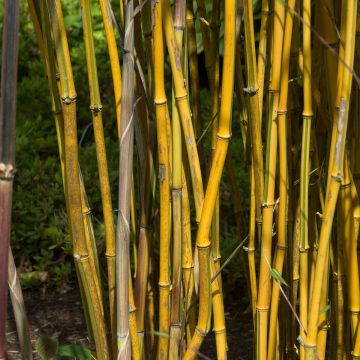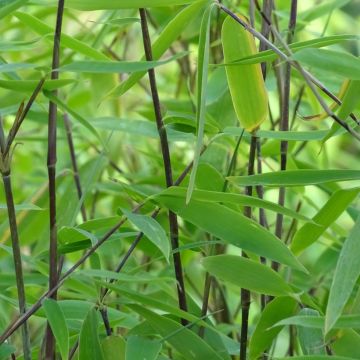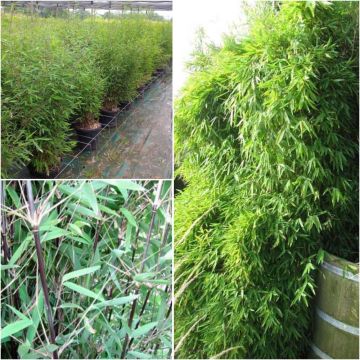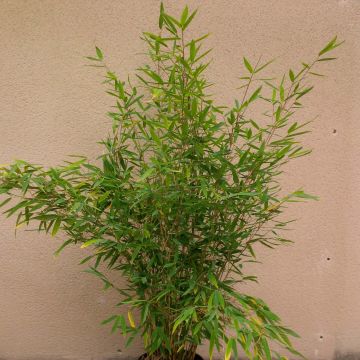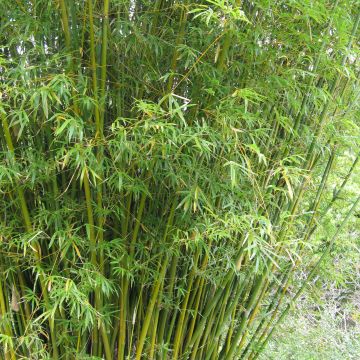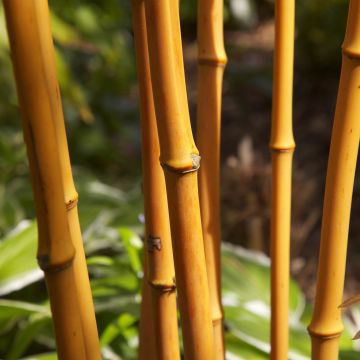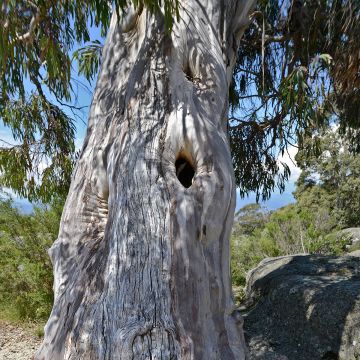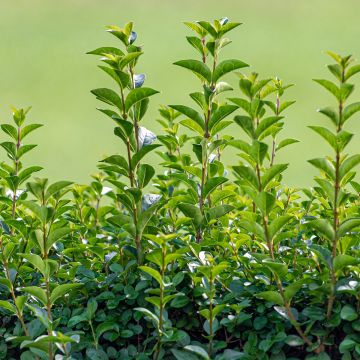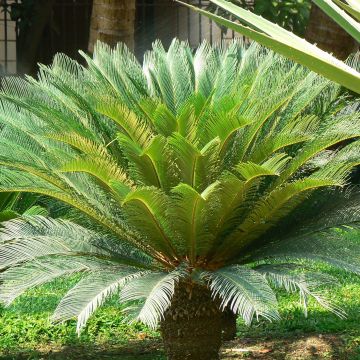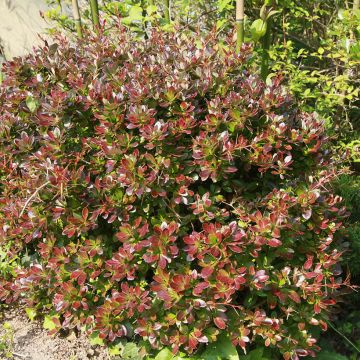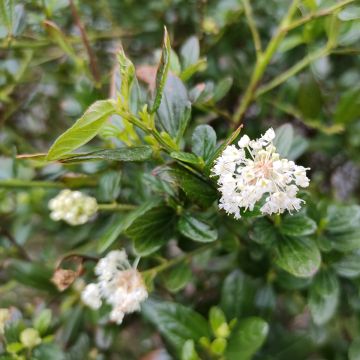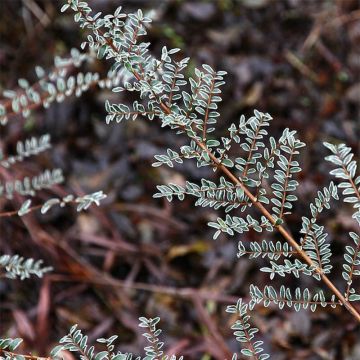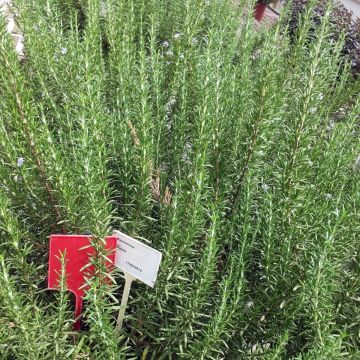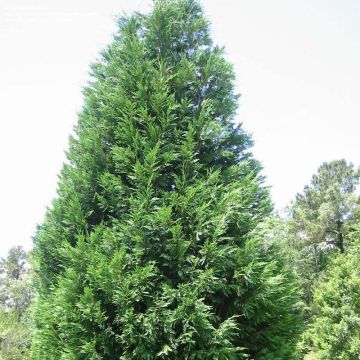

Fargesia angustissima
Fargesia angustissima
Fountain Bamboo, Umbrella Bamboo
The plants were in good condition upon delivery (I ordered 2 of them). They took a bit of time to grow stronger, and during the first summer, they were quite sensitive to the heat. But they seem to have settled in well now.
Marion, 22/09/2024
This item cannot be shipped to the selected country
Delivery charge from €5.90
More information
Schedule delivery date,
and select date in basket
This plant carries a 24 months recovery warranty
More information
We guarantee the quality of our plants for a full growing cycle, and will replace at our expense any plant that fails to recover under normal climatic and planting conditions.
From €5.90 for pickup delivery and €6.90 for home delivery
Express home delivery from €8.90.
Does this plant fit my garden?
Set up your Plantfit profile →
Description
The Fargesia angustissima is a medium-sized bamboo, non-spreading, with green-purple culms and fine green leaves. Its compact habit is well suited for small spaces such as terraces and balconies.
Originating from central China, the Fargesia angustissima has an upright and compact habit, growing in dense clumps. It has relatively thin culms of about one centimetre in diameter and violet, adorned with fine and dense foliage. Its growth is relatively fast to slow, reaching a height of 2.5 to 5 metres a few years. It is slightly more frost-sensitive than the other varieties, but can still withstand temperatures down to -12°C (in case of snowfall, remember to shake off the snow from its culms).
Bamboos are not demanding plants, they thrive in any garden soil. However, their growth rate and maximum height will be influenced by the quality and moisture content of the soil. Ideally, plant them in acidic or neutral, light, moist, and well-drained soil. In terms of exposure, we recommend planting your Fargesia angustissima in shade or partial shade, sheltered from the scorching sun and cold, drying winds.
The Fargesia angustissima is a clump-forming bamboo, not spreading. The installation of a rhizome barrier is therefore optional.
A star of Asian-inspired gardens, bamboo suits many styles, from the most modern to the most traditional. When planted in mass, it quickly creates small and exotic forests, adding beautiful verticality to modern gardens and terraces. Its fast growth also makes it an excellent plant for managing privacy in crowded spaces. The Fargesia angustissima can be grown in pots, so you can use it on your terrace as a natural screen to create intimate spaces.
Bamboo can also be planted as a standalone specimen. In an Asian-inspired garden, you can associate it with Japanese Maples, Azaleas, or the radiant Hakonecloa macra Aureola.
Fun Fact: Bamboo flowering is a rare and unpredictable event that is of little interest to most people. This occurrence is considered a bad omen as it signals the plant's imminent death. However, you don't need to worry too much, as it is a rare phenomenon and some bamboo species are resilient enough to regenerate over time.
Report an error about the product description
Fargesia angustissima in pictures
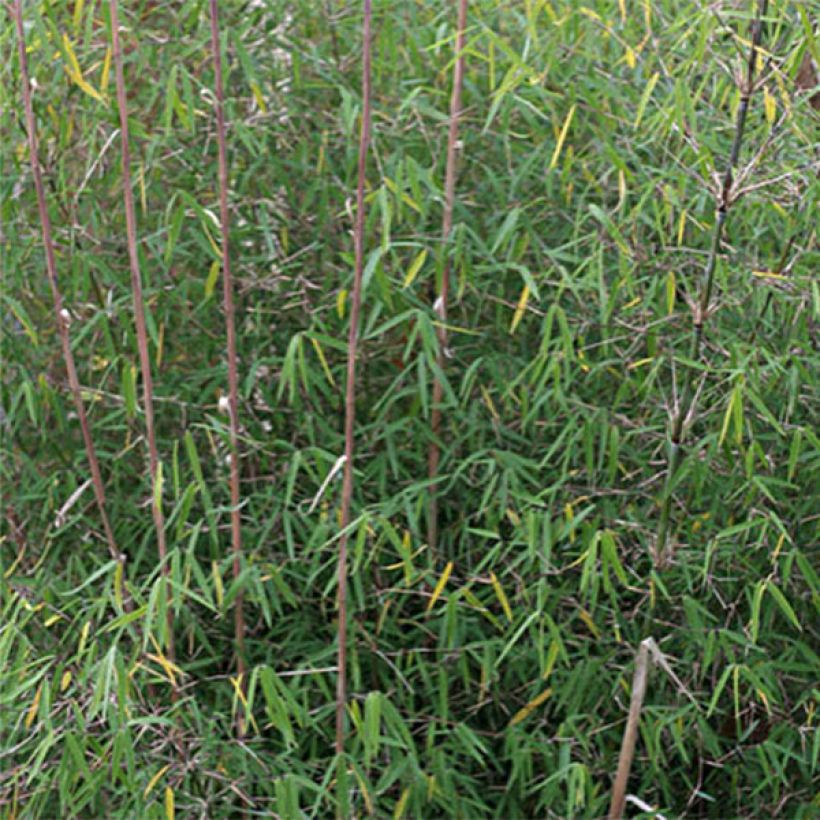

Plant habit
Foliage
Botanical data
Fargesia
angustissima
Poaceae
Fountain Bamboo, Umbrella Bamboo
China
Other Bamboos
Planting and care
Grown in containers, bamboo can be planted at any time of the year, except in case of frost. However, the best planting period is late summer and autumn, when the soil is warm and there are more frequent rains. The planting distance depends on how you will use your bamboo: for a mass planting, allow a spacing of 1.8 to 2.2 metres (5 feet 11 inches to 7 feet 2 inches) between each plant. For a hedge, this distance is reduced to 1 to 1.4 metres (3 feet 4 inches to 4 feet 7 inches).
In general, bamboo prefers rich, well-drained soil that remains moist, either acidic or neutral. They can tolerate slightly chalky soil.
During planting, do not hesitate to loosen the soil and moisten the root ball by soaking it. You can add well-decomposed compost, which you will rake on the surface. Watering should be done regularly during the first year in open ground, and constantly if your bamboo is grown in a pot. The establishment period may sometimes seem a bit long, but don't panic!
This bamboo is not invasive, so the installation of a rhizome barrier (thick and resistant polypropylene film) is therefore optional.
As for maintenance, bamboo is not demanding: remember to weed around their base at least initially until their dead leaves, left on the ground, form a natural mulch. An application of nitrogen-rich fertiliser (well-rotted manure or liquid fertiliser) in spring and autumn can be beneficial.
Planting period
Intended location
Care
-
, onOrder confirmed
Reply from on Promesse de fleurs
Evergreen shrubs
Haven't found what you were looking for?
Hardiness is the lowest winter temperature a plant can endure without suffering serious damage or even dying. However, hardiness is affected by location (a sheltered area, such as a patio), protection (winter cover) and soil type (hardiness is improved by well-drained soil).

Photo Sharing Terms & Conditions
In order to encourage gardeners to interact and share their experiences, Promesse de fleurs offers various media enabling content to be uploaded onto its Site - in particular via the ‘Photo sharing’ module.
The User agrees to refrain from:
- Posting any content that is illegal, prejudicial, insulting, racist, inciteful to hatred, revisionist, contrary to public decency, that infringes on privacy or on the privacy rights of third parties, in particular the publicity rights of persons and goods, intellectual property rights, or the right to privacy.
- Submitting content on behalf of a third party;
- Impersonate the identity of a third party and/or publish any personal information about a third party;
In general, the User undertakes to refrain from any unethical behaviour.
All Content (in particular text, comments, files, images, photos, videos, creative works, etc.), which may be subject to property or intellectual property rights, image or other private rights, shall remain the property of the User, subject to the limited rights granted by the terms of the licence granted by Promesse de fleurs as stated below. Users are at liberty to publish or not to publish such Content on the Site, notably via the ‘Photo Sharing’ facility, and accept that this Content shall be made public and freely accessible, notably on the Internet.
Users further acknowledge, undertake to have ,and guarantee that they hold all necessary rights and permissions to publish such material on the Site, in particular with regard to the legislation in force pertaining to any privacy, property, intellectual property, image, or contractual rights, or rights of any other nature. By publishing such Content on the Site, Users acknowledge accepting full liability as publishers of the Content within the meaning of the law, and grant Promesse de fleurs, free of charge, an inclusive, worldwide licence for the said Content for the entire duration of its publication, including all reproduction, representation, up/downloading, displaying, performing, transmission, and storage rights.
Users also grant permission for their name to be linked to the Content and accept that this link may not always be made available.
By engaging in posting material, Users consent to their Content becoming automatically accessible on the Internet, in particular on other sites and/or blogs and/or web pages of the Promesse de fleurs site, including in particular social pages and the Promesse de fleurs catalogue.
Users may secure the removal of entrusted content free of charge by issuing a simple request via our contact form.
The flowering period indicated on our website applies to countries and regions located in USDA zone 8 (France, the United Kingdom, Ireland, the Netherlands, etc.)
It will vary according to where you live:
- In zones 9 to 10 (Italy, Spain, Greece, etc.), flowering will occur about 2 to 4 weeks earlier.
- In zones 6 to 7 (Germany, Poland, Slovenia, and lower mountainous regions), flowering will be delayed by 2 to 3 weeks.
- In zone 5 (Central Europe, Scandinavia), blooming will be delayed by 3 to 5 weeks.
In temperate climates, pruning of spring-flowering shrubs (forsythia, spireas, etc.) should be done just after flowering.
Pruning of summer-flowering shrubs (Indian Lilac, Perovskia, etc.) can be done in winter or spring.
In cold regions as well as with frost-sensitive plants, avoid pruning too early when severe frosts may still occur.
The planting period indicated on our website applies to countries and regions located in USDA zone 8 (France, United Kingdom, Ireland, Netherlands).
It will vary according to where you live:
- In Mediterranean zones (Marseille, Madrid, Milan, etc.), autumn and winter are the best planting periods.
- In continental zones (Strasbourg, Munich, Vienna, etc.), delay planting by 2 to 3 weeks in spring and bring it forward by 2 to 4 weeks in autumn.
- In mountainous regions (the Alps, Pyrenees, Carpathians, etc.), it is best to plant in late spring (May-June) or late summer (August-September).
The harvesting period indicated on our website applies to countries and regions in USDA zone 8 (France, England, Ireland, the Netherlands).
In colder areas (Scandinavia, Poland, Austria...) fruit and vegetable harvests are likely to be delayed by 3-4 weeks.
In warmer areas (Italy, Spain, Greece, etc.), harvesting will probably take place earlier, depending on weather conditions.
The sowing periods indicated on our website apply to countries and regions within USDA Zone 8 (France, UK, Ireland, Netherlands).
In colder areas (Scandinavia, Poland, Austria...), delay any outdoor sowing by 3-4 weeks, or sow under glass.
In warmer climes (Italy, Spain, Greece, etc.), bring outdoor sowing forward by a few weeks.

































